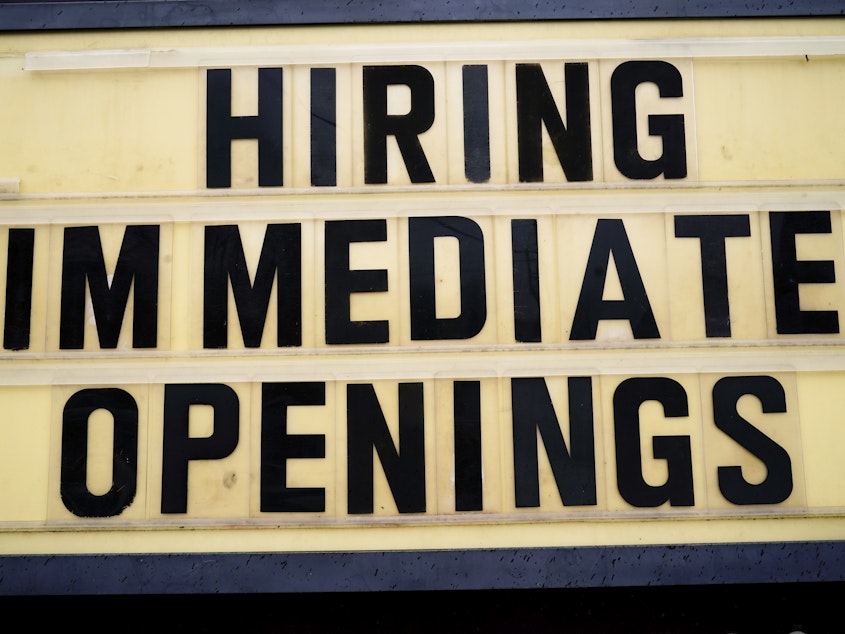Still grappling with staff shortages, Seattle area restaurants get creative

Holiday parties seem to be in full swing after a three-year hiatus during Covid — many of them taking place in restaurants. While it’s good news for businesses, staffing is still an issue for the hospitality sector.
Ray’s Boathouse has been enjoying a rebound. The longtime seafood restaurant in Ballard’s Shilshole Bay is busy with birthdays, weddings, and other big life celebrations that were put on hold during the pandemic.
“2022 was great, and in 2023, we’re close to 2019 numbers,” said co-owner Douglas Zellers.
And, most companies are hosting December holiday parties again. The parties matter because those busy times provide some financial cushion for the slow, winter months.
But labor remains a challenge and restaurants have had to be creative. Zellers said they started relying on word of mouth.
Sponsored
“We do an employee incentive for people. If someone they know comes and gets hired here and they stay for a certain period of time, the employee will receive a bonus for that,” Zellers said.
This could help explain why there are fewer want ads posted these days. Businesses have not only changed their hiring strategy — some have adjusted their operations.
“More and more places are closed for lunch or not open on a Monday or Tuesday,” said Anthony Anton, CEO of the Washington Hospitality Association. “I think the reality is employers are taking the workforce they have and shifting it to their busiest times.”
He even knows of one operator who bought another restaurant and later sold it, but kept its staff. Anton expects the labor shortage to last a few more years, in part because of demographics.
“For every 10 boomers that retire, there are not enough [people] to replace them ... so we’re going to be moving until the Gen Xers start retiring,” Anton said. By then, he added, there will be enough millennials to replace their predecessors.
Sponsored
Many industries saw job losses during Covid’s early days. Annaliese Vance-Sherman, chief labor economist with the state’s Employment Security Department, noted the food industry saw a 40% drop. She said the industry has made remarkable recovery, but it still lags behind compared to the aggregate of all other industries. That’s in part because of consumer behavior.
“We shifted our consumption patterns; we collectively went to the stores more,” Vance-Sherman said.
We were also eating out less. Sure, people are eating out again, but not to the same level that we did a few years ago. At least not in King County. But the dynamics in Snohomish County look different, Vance-Sherman said.
“We’ve got a lot of people that commute from Snohomish County ... they work in King County, and leisure and hospitality recovered much more quickly there.”
That's because people are more likely to eat out near where they live. Vance-Sherman described the current situation as part of an ongoing ripple effect from the start of the pandemic. She used an analogy of a pebble dropping in the water.
Sponsored
“You have that initial splash when everything is turbulent and unusual and you’re having to navigate something completely different,” Vance-Sherman said. “Then you get that first wave of that first ripple, and that first ripple is still turbulent but it’s not as bad as the first splash.”
Then another ripple comes after that, and you still feel the impact. But there’s a slight shift. It’s not as jarring.
“We’ve dug out of the hole; we’ve gotten through that crisis,” Vance-Sherman said. Now we’re beginning to settle into something more familiar, that familiar churn of the economy.




